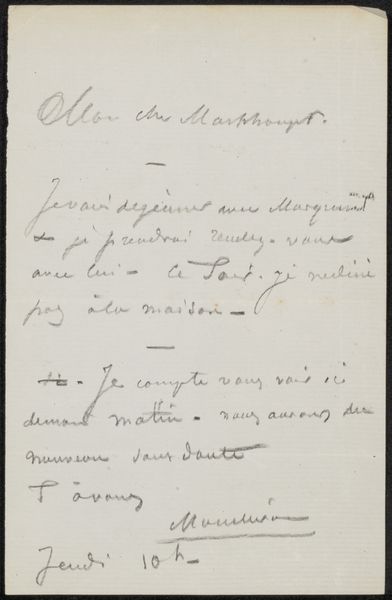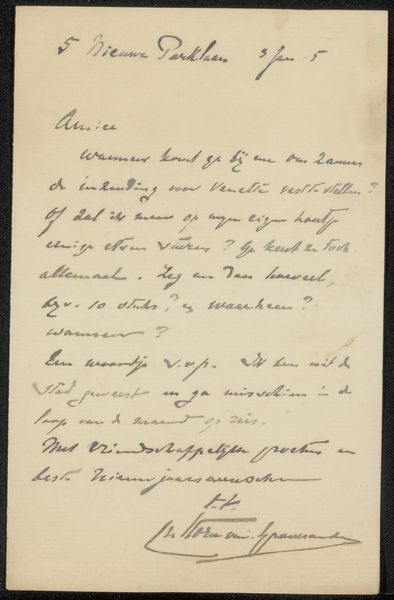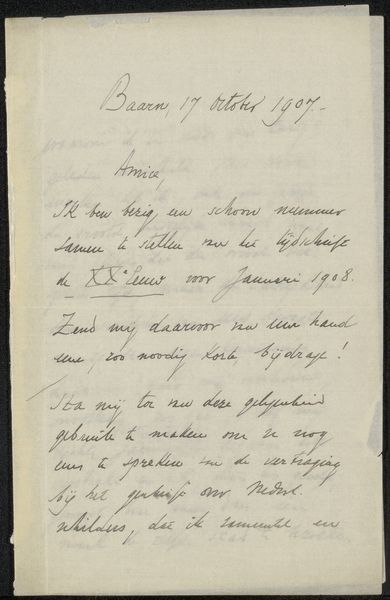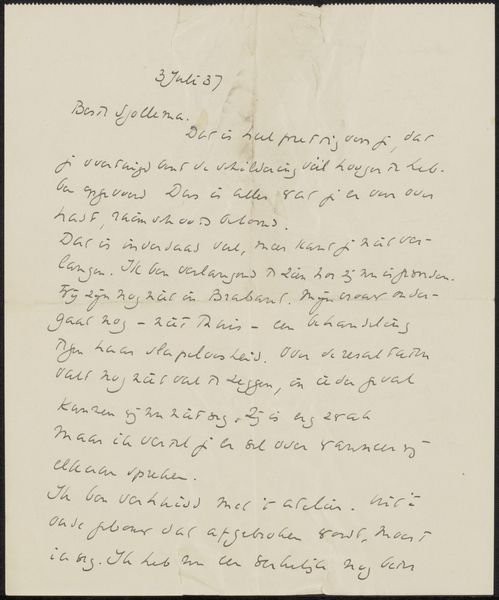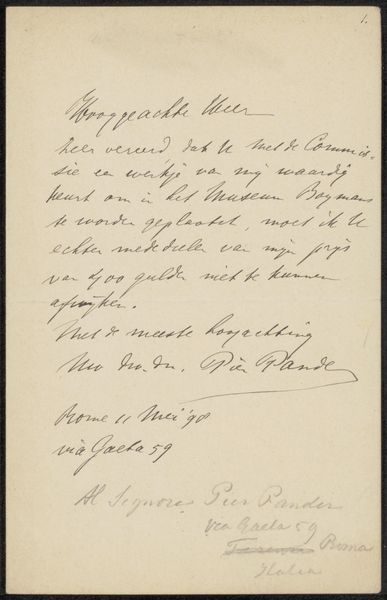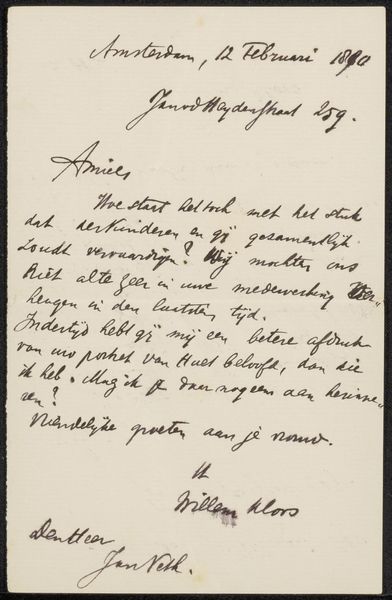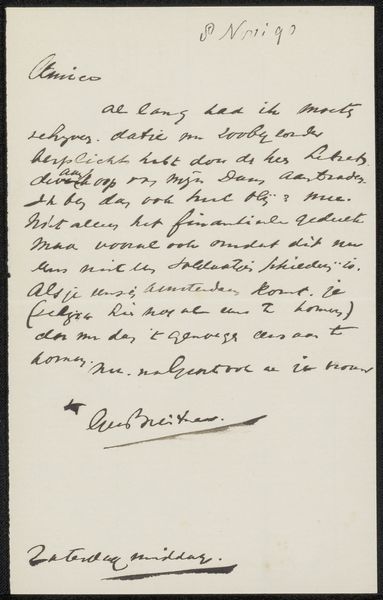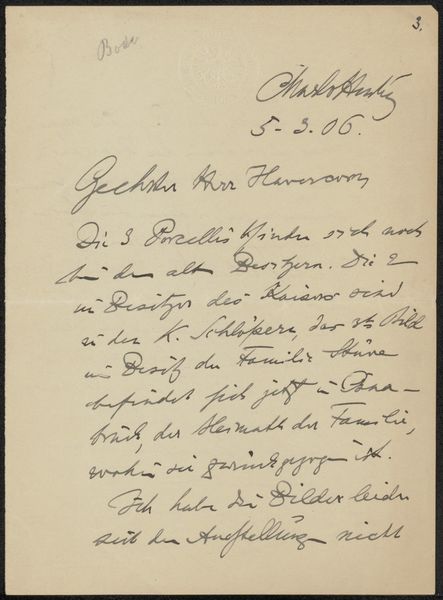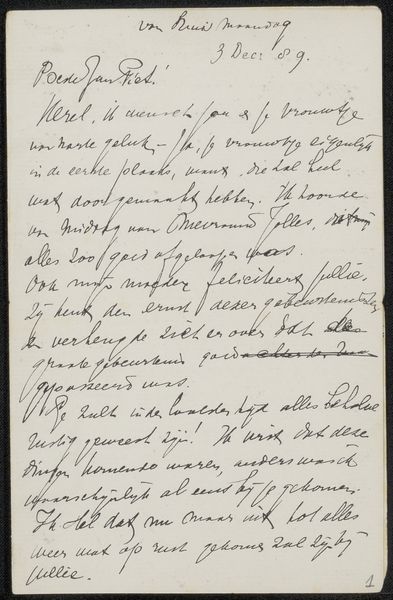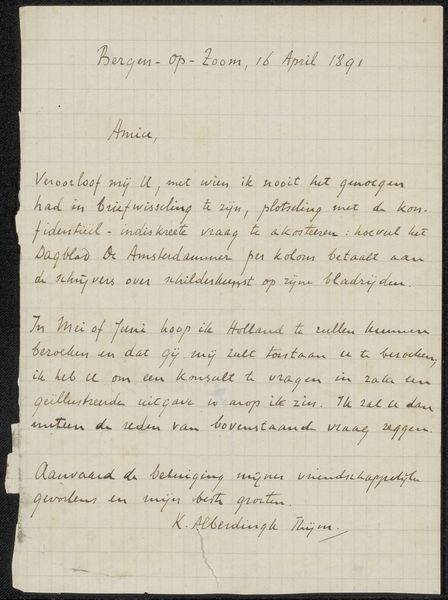
mixed-media, textile, paper, ink
#
mixed-media
#
textile
#
paper
#
ink
#
calligraphy
Copyright: Rijks Museum: Open Domain
Editor: Here we have "Brief aan Philip Zilcken," possibly from 1905, by Carel Nicolaas Storm van 's-Gravesande, made with mixed media: textile, paper, and ink. It looks like a handwritten letter; the text seems very intimate and personal. How do you interpret this work, considering its historical context? Curator: This piece speaks volumes about the act of communication in the early 20th century, before the digital age transformed interpersonal connection. We need to consider not just the text but also the materiality: the specific type of paper used, the ink, the pressure applied to the pen. These details offer insights into the sender's social standing and the perceived importance of the recipient. How might the physical act of writing and sending this letter be viewed as a performance of intimacy and power? Editor: I see your point! It's easy to overlook the physicality now that we send emails instantly, but the letter itself becomes a sort of artifact, encoding social dynamics. Is it possible to know why the author sent it? Curator: While we can't be certain about the author's full intention without more context, the fact it's addressed to Philip Zilcken, who was an artist himself, likely indicates that the letter concerned art matters. The mention of Venice adds another dimension; Perhaps they planned to travel together. What sort of social and artistic networks do you think fostered exchange and the growth of artistic expression during this period? Editor: These types of close relationships must have played an important role to get new ideas. It highlights how interpersonal and social interaction have affected culture back then and still to this day. I'll keep that in mind. Curator: Indeed. This artwork serves as a reminder to consider the social, cultural, and deeply human conditions of art's creation and reception. It asks us to reflect on how the medium shapes the message.
Comments
No comments
Be the first to comment and join the conversation on the ultimate creative platform.
